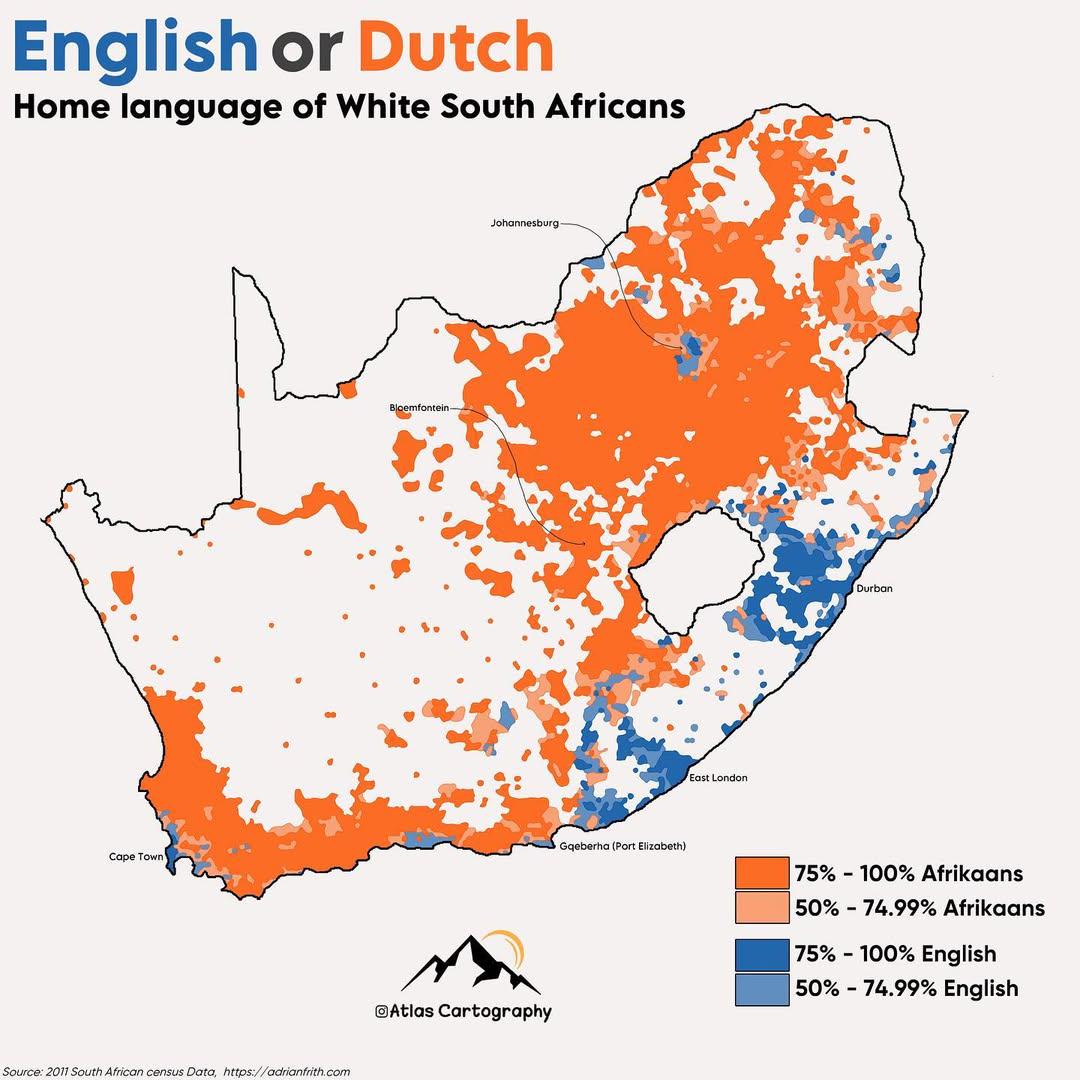Home Language Map of White South Africans


David Chen
Data Visualization Specialist
David Chen is an expert in transforming complex geographic datasets into compelling visual narratives. He combines his background in computer science ...
Geographic Analysis
What This Map Shows
The map titled "Home Language of White South Africans" visually represents the primary languages spoken at home by the White population in South Africa. This visualization provides insight into the linguistic diversity within this demographic group, which often reflects historical, social, and cultural factors influencing language use in the country. By examining this map, one can gain a clearer understanding of how language not only serves as a communication tool but also as a marker of identity and heritage among the White South African community.
Deep Dive into Home Languages
When we talk about home languages among White South Africans, Afrikaans and English stand out prominently. Afrikaans, which evolved from Dutch, has deep historical roots in South Africa, particularly associated with the Afrikaner community. Interestingly, it is not just a language but a cultural symbol for many, representing the complex history of colonialism, conflict, and identity in the region.
On the other hand, English is often viewed as the language of commerce and international communication. The prevalence of English among the White population is indicative of its role in urban settings and its status as a lingua franca in South Africa. According to the latest census data, around 60% of the White South African population speaks Afrikaans at home, while approximately 35% use English, showcasing a significant linguistic divide.
What’s fascinating is how these languages have influenced various aspects of life, including education, media, and politics. Afrikaans has historically been the medium of instruction in many schools catering to White learners, while English has gained traction in universities and business sectors.
Beyond Afrikaans and English, there are smaller communities that speak other European languages, such as German and Portuguese, reflecting the diverse ancestry of many White South Africans. This linguistic mix illustrates the historical waves of immigration from Europe, which have contributed to the cultural tapestry of the nation.
Regional Analysis
When we look at the map regionally, there are notable differences in language use among White South Africans. For instance, in the Western Cape, Afrikaans dominates, particularly in rural areas where the Afrikaner community has a strong presence. Cities like Cape Town, however, showcase a blend, with English being more prevalent due to its cosmopolitan nature and diverse population.
In Gauteng, where Johannesburg is located, English tends to be the preferred language of communication among the White population, primarily due to the economic opportunities and the influence of international businesses. However, Afrikaans still holds significance, particularly in certain suburbs and communities.
Moreover, in KwaZulu-Natal, the presence of English increases further, as this province attracts many English-speaking individuals and families seeking a coastal lifestyle. The map highlights these regional variations, allowing us to visualize how geography influences linguistic distribution.
Significance and Impact
Understanding the home languages of White South Africans is crucial for several reasons. Firstly, it sheds light on the cultural identity and heritage of a segment of the population that has experienced significant social and political changes over the last few decades. The shift in language use also reflects broader societal trends, such as urbanization, globalization, and changing demographics.
Furthermore, language is a critical factor in education policy and social integration. As South Africa continues to grapple with its diverse linguistic landscape, the role of language in fostering unity versus division becomes increasingly important. The prevalence of English, for example, raises questions about access to education and resources for Afrikaans-speaking communities.
Looking to the future, it’s essential to monitor these trends as they will likely influence social cohesion and community dynamics in South Africa. As the nation continues to evolve, so will the languages spoken within it, reflecting ongoing changes in identity, heritage, and social interaction.
In conclusion, the home language map of White South Africans offers more than just a snapshot of linguistic preferences; it encapsulates the historical, social, and cultural narratives that have shaped this community. Understanding these dynamics is not only integral to the study of geography but also to the broader discourse on identity and multiculturalism in South Africa.
Visualization Details
- Published
- August 15, 2025
- Views
- 208
Comments
Loading comments...